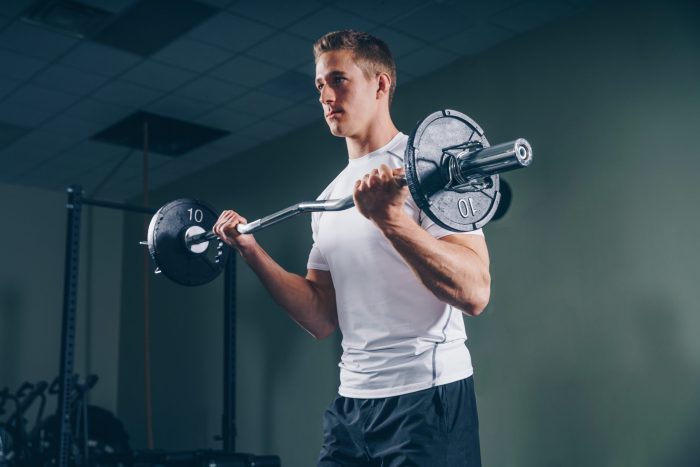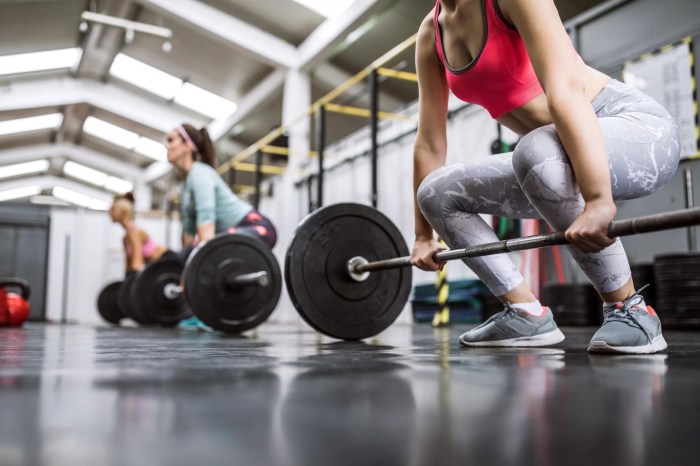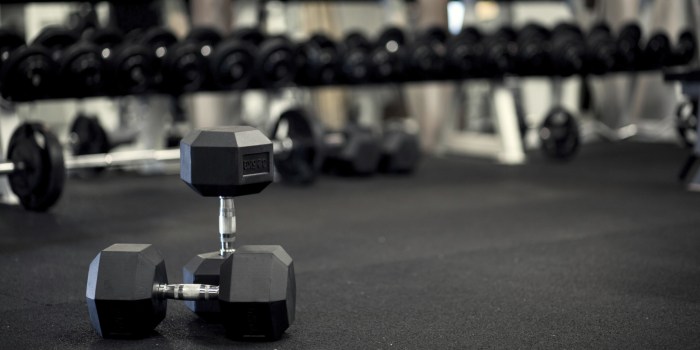Weights for weight lifting are essential tools for building strength, improving fitness, and enhancing overall well-being. Whether you’re a beginner or an experienced lifter, understanding the basics of weightlifting can help you achieve your fitness goals safely and effectively.
This comprehensive guide will provide you with everything you need to know about weights for weight lifting, including the different types of weights, proper lifting techniques, weight selection, exercise progression, rest and recovery, and essential safety tips.
Types of Weights

In weightlifting, various types of weights are used to provide resistance and challenge the muscles. Each type of weight offers unique advantages and disadvantages, catering to specific fitness goals and preferences.
The primary types of weights include dumbbells, barbells, kettlebells, and weight plates.
Dumbbells
- Consist of two individual weights connected by a handle.
- Advantages:
- Versatile and allow for a wide range of exercises.
- Independent movement of each arm, promoting balance and coordination.
- Compact and easy to store.
- Disadvantages:
- Limited weight capacity compared to barbells.
- Can be challenging to maintain proper form with heavy weights.
Barbells
- Consist of a long, straight bar with weights attached to both ends.
- Advantages:
- Allow for heavier weightlifting than dumbbells.
- Promote stability and balance.
- Versatile for various compound exercises.
- Disadvantages:
- Less versatile than dumbbells for unilateral exercises.
- Require more space for storage.
Kettlebells
- Feature a cast iron ball with a handle attached to the top.
- Advantages:
- Unique design allows for dynamic and functional movements.
- Versatile for both strength training and cardiovascular exercises.
- Compact and portable.
- Disadvantages:
- Limited weight range compared to barbells and dumbbells.
- Can be challenging to master proper technique.
Weight Plates
- Individual weights with holes for loading onto barbells or machines.
- Advantages:
- Highly versatile and customizable.
- Allow for precise weight adjustments.
- Compatible with various equipment.
- Disadvantages:
- Require a barbell or machine for use.
- Can be bulky and require dedicated storage space.
Weight Selection

Choosing the appropriate weight for each exercise is crucial for maximizing results and preventing injuries. Start with a manageable weight that allows you to maintain good form throughout the exercise. Gradually increase the weight as you get stronger.
Weight Selection Recommendations
| Fitness Level | Goals | Weight Range |
|---|---|---|
| Beginner | Strength building | 50-70% of 1-repetition maximum (1RM) |
| Intermediate | Muscle growth | 70-85% of 1RM |
| Advanced | Power development | 85-100% of 1RM |
Note: 1RM refers to the maximum weight you can lift for one repetition of an exercise.
Examples:
- Squat: 50-70% of 1RM for beginners, 70-85% of 1RM for intermediate lifters, 85-100% of 1RM for advanced lifters
- Bench press: 50-70% of 1RM for beginners, 70-85% of 1RM for intermediate lifters, 85-100% of 1RM for advanced lifters
Weightlifting Equipment

To engage in weightlifting, having the right equipment is crucial. This ensures a safe and effective workout experience, preventing injuries and maximizing results. Essential weightlifting equipment includes weight benches, racks, and mats. Let’s explore the types of equipment and their benefits.
Weight Benches
Weight benches provide a stable platform for exercises like bench press, dumbbell flyes, and tricep extensions. They come in various designs, including flat, adjustable, and incline benches, each targeting different muscle groups.
- Flat Benches:Ideal for exercises like bench press and dumbbell flyes, focusing on the chest muscles.
- Adjustable Benches:Versatile benches that allow you to adjust the backrest angle, enabling exercises for various muscle groups, including chest, shoulders, and back.
- Incline Benches:Designed to elevate the upper body, these benches are great for targeting the upper chest and shoulders.
Weightlifting Racks
Weightlifting racks provide a secure framework for exercises like squats, deadlifts, and overhead presses. They come in different styles, including power racks, half racks, and squat racks.
- Power Racks:Offer a full cage-like structure with safety bars, providing maximum support and stability.
- Half Racks:Similar to power racks but with an open front, allowing for exercises like bench press and overhead presses.
- Squat Racks:Designed specifically for squats, these racks have adjustable height settings for optimal positioning.
Weightlifting Mats
Weightlifting mats are essential for protecting the floor from heavy weights and providing a comfortable surface for exercises like stretching and floor exercises. They come in various materials, including rubber, foam, and interlocking tiles.
- Rubber Mats:Durable and heavy-duty, these mats provide excellent shock absorption and protection for the floor.
- Foam Mats:Provide a softer and more comfortable surface, ideal for stretching and bodyweight exercises.
- Interlocking Tiles:Easy to assemble and disassemble, these tiles offer versatility and can be used to create custom workout areas.
Home Gym vs. Commercial Gym
Deciding between a home gym or a commercial gym depends on your preferences and needs. Home gyms offer convenience and privacy but may have limited equipment and space. Commercial gyms provide a wider range of equipment and expert guidance but can be crowded and expensive.
Reputable Manufacturers
When choosing weightlifting equipment, consider reputable manufacturers known for their quality and durability. Some recommended brands include Rogue Fitness, Titan Fitness, and Rep Fitness.
Story: Transformation Through Weightlifting
Weightlifting can be transformative. Consider the story of Sarah, who struggled with weight gain and low self-esteem. She decided to join a gym and began a weightlifting program. With proper equipment and guidance, she gradually lost weight, gained strength, and boosted her confidence.
Weightlifting became her passion, empowering her to lead a healthier and more fulfilling life.
Weightlifting Programs
Weightlifting programs are structured plans that guide individuals in their weightlifting journey. Different programs cater to specific goals and fitness levels. Understanding the types of programs available empowers individuals to choose the one that aligns with their objectives.There are three main types of weightlifting programs: strength training, hypertrophy training, and powerlifting.
Each program has distinct benefits and goals.
Strength Training
Strength training focuses on increasing muscular strength. It involves lifting heavy weights with low repetitions, typically in the range of 1-5. Strength training helps build muscle mass, improve bone density, and enhance overall strength.
Hypertrophy Training
Hypertrophy training aims to increase muscle size. It involves lifting moderate weights with higher repetitions, typically in the range of 8-12. Hypertrophy training stimulates muscle growth and helps achieve a more muscular physique.
Powerlifting
Powerlifting is a competitive sport that involves lifting the heaviest weight possible in three lifts: the squat, bench press, and deadlift. Powerlifting training focuses on developing maximal strength and power. It involves lifting very heavy weights with low repetitions, typically in the range of 1-3.
Nutrition for Weightlifting: Weights For Weight Lifting

Nutrition plays a crucial role in weightlifting, providing the fuel and building blocks necessary for muscle growth, recovery, and optimal performance. A balanced diet that meets specific macronutrient and hydration needs is essential for weightlifters.
Macronutrient Needs
- Protein:Essential for building and repairing muscle tissue. Aim for 1.2-2.0 grams of protein per kilogram of body weight per day.
- Carbohydrates:Provide energy for high-intensity workouts. Consume complex carbohydrates such as whole grains, fruits, and vegetables.
- Fats:Support hormone production and cell function. Include healthy fats from sources like avocados, nuts, and olive oil.
Hydration
Adequate hydration is vital for overall health and performance. Drink plenty of water before, during, and after workouts to prevent dehydration and optimize muscle function.
Weightlifting Safety
Safety should be the top priority in weightlifting to prevent injuries and ensure a positive experience. Common injuries include muscle strains, sprains, and joint pain. To prevent these, proper lifting technique, using the right equipment, and warming up before workouts are essential.
Common Injuries and Prevention
| Injury | Cause |
|---|---|
| Muscle strain | Overexertion, improper form |
| Sprain | Twisting or overextending a joint |
| Joint pain | Overuse, poor form, weak muscles |
| Tendonitis | Inflammation of a tendon |
| Carpal tunnel syndrome | Pressure on the median nerve in the wrist |
Safety Precautions
- Use proper lifting technique and avoid overexertion.
- Warm up before workouts and cool down afterward.
- Use proper equipment and ensure it’s in good condition.
- Have a spotter when lifting heavy weights.
- Listen to your body and stop if you feel pain.
- Get enough rest and nutrition to support your workouts.
Role of a Spotter
A spotter assists with lifts by providing support and safety. They ensure proper form, help with heavy weights, and intervene if a lifter struggles.
Overexertion
Overexertion can lead to injuries and setbacks. Listen to your body and take rest days when needed. Gradually increase weight and intensity to avoid overloading your muscles and joints.
Warm-up and Cool-down
Warming up prepares your body for exercise, while cooling down helps reduce muscle soreness and stiffness. Incorporate dynamic stretches and light cardio into your warm-up, and static stretches into your cool-down.
Proper Equipment
Using the right equipment, such as weightlifting shoes, belts, and wrist wraps, can enhance safety and support. Ensure your equipment fits properly and is in good condition.
“Safety is paramount in weightlifting. By following these guidelines, you can minimize the risk of injuries and maximize your gains.”- Mark Rippetoe, renowned strength coach
– Elaborate on the physiological adaptations that occur during weightlifting and how they contribute to specific goals.
Weightlifting induces remarkable physiological adaptations that enhance overall health and fitness. These adaptations contribute significantly to achieving specific goals, whether it’s building muscle mass, improving strength, or enhancing athletic performance.
Resistance training, such as weightlifting, stimulates muscle protein synthesis, leading to increased muscle size and strength. This process is influenced by factors like training intensity, volume, and frequency. Regular weightlifting sessions also promote the development of new muscle fibers, further enhancing muscle growth and strength.
Neuromuscular Adaptations
Weightlifting improves neuromuscular coordination and efficiency. It enhances the communication between the nervous system and muscles, allowing for better muscle activation and control. This translates into improved force production, power, and overall athletic performance.
Metabolic Adaptations
Weightlifting increases muscle mass and strength, which boosts metabolism. This means the body burns more calories at rest and during physical activity, contributing to weight loss and maintenance. Additionally, weightlifting improves insulin sensitivity, enhancing the body’s ability to utilize glucose for energy, further supporting muscle growth and recovery.
Bone Density and Joint Health
Weightlifting exerts stress on bones, stimulating bone formation and increasing bone density. This is particularly beneficial for reducing the risk of osteoporosis and fractures. Moreover, weightlifting strengthens joints and connective tissues, promoting joint stability and reducing the likelihood of injuries.
Cardiovascular Benefits
Although weightlifting is not primarily a cardiovascular exercise, it can provide some cardiovascular benefits. It elevates heart rate and improves blood flow, which can enhance cardiovascular health over time.
Weightlifting for Beginners

Weightlifting, also known as strength training, is a form of exercise that involves lifting weights to improve muscular strength and endurance. It is a great way to improve overall fitness, burn fat, and build muscle. If you’re new to weightlifting, it’s important to start slowly and gradually increase the weight you lift as you get stronger.
Here’s a comprehensive guide for beginners on how to get started with weightlifting.
Essential Exercises
There are a few essential exercises that every beginner should learn. These exercises target all the major muscle groups and provide a solid foundation for strength training. The exercises include:
- Barbell squat
- Bench press
- Deadlift
- Overhead press
- Row
Proper Form
It’s important to learn proper form for each exercise to avoid injury and maximize results. Here are some general tips for proper form:
- Keep your back straight and your core engaged.
- Lift the weight with your legs, not your back.
- Don’t lock your knees at the top of the movement.
- Lower the weight slowly and controlled.
- Breathe out as you lift the weight and inhale as you lower it.
Safety Precautions
Weightlifting can be a safe and effective form of exercise, but it’s important to take some safety precautions to avoid injury. Here are some safety tips:
- Always warm up before lifting weights.
- Don’t lift more weight than you can handle.
- Use a spotter when lifting heavy weights.
- Listen to your body and stop if you feel pain.
- Get enough rest between workouts.
– Provide specific examples of periodization plans for advanced weightlifters.
Periodization is a structured approach to weightlifting that involves manipulating training variables over time to optimize progress. Advanced weightlifters often use periodization plans to maximize their gains in strength, power, and muscle mass.
There are many different periodization plans that can be used by advanced weightlifters. One popular plan is the linear periodization plan, which involves gradually increasing the weight and volume of training over time. Another popular plan is the undulating periodization plan, which involves varying the weight and volume of training on a weekly or monthly basis.
The best periodization plan for an advanced weightlifter will depend on their individual goals and training experience. However, all periodization plans should be designed to provide a progressive overload, which is the gradual increase in the stress placed on the body over time.
This progressive overload is what leads to adaptations in strength, power, and muscle mass.
Linear Periodization Plan
- Begin with a weight that is challenging but allows for good form.
- Gradually increase the weight by 2.5-5 pounds each week.
- Maintain the same weight for 3-4 weeks, then increase the weight again.
- Repeat this process for 12-16 weeks.
Undulating Periodization Plan, Weights for weight lifting
- Week 1: Heavy weight, low volume
- Week 2: Moderate weight, moderate volume
- Week 3: Light weight, high volume
- Week 4: Deload (rest)
- Repeat this cycle for 4-8 weeks.
Weightlifting for Rehabilitation

Weightlifting can be a valuable tool for rehabilitation after injuries or surgeries. It can help to strengthen muscles, improve range of motion, and reduce pain.
Specific Examples
Weightlifting can be used to rehabilitate a variety of injuries, including:
Musculoskeletal injuries
Weightlifting can help to strengthen muscles and tendons, which can help to stabilize joints and reduce pain.
Neurological injuries
Weightlifting can help to improve balance and coordination, which can be beneficial for people who have suffered a stroke or brain injury.
Cardiovascular injuries
Weightlifting can help to improve heart health and circulation, which can be beneficial for people who have had a heart attack or stroke.
Benefits and Precautions
Weightlifting can provide a number of benefits for people who are recovering from injuries or surgeries, including:
Increased strength and range of motion
Weightlifting can help to strengthen muscles and improve range of motion, which can make it easier to perform everyday activities.
Reduced pain
Weightlifting can help to reduce pain by strengthening muscles and improving joint stability.
Improved balance and coordination
Weightlifting can help to improve balance and coordination, which can be beneficial for people who have suffered a stroke or brain injury.
Increased cardiovascular health
Weightlifting can help to improve heart health and circulation, which can be beneficial for people who have had a heart attack or stroke.However, it is important to take precautions when weightlifting after an injury or surgery. These precautions include:
Choosing the right exercises and weights
It is important to choose exercises that are appropriate for your injury or surgery. You should also start with a light weight and gradually increase the weight as you get stronger.
Progressing gradually
It is important to progress gradually when weightlifting after an injury or surgery. You should start with a few repetitions of each exercise and gradually increase the number of repetitions as you get stronger.
Avoiding re-injury
It is important to avoid re-injury when weightlifting after an injury or surgery. You should listen to your body and stop if you feel pain. You should also be sure to use proper form when lifting weights.
Table: Benefits and Precautions of Weightlifting for Rehabilitation
| Benefit| Precaution||—|—|| Increased strength and range of motion | Choose the right exercises and weights || Reduced pain | Progress gradually || Improved balance and coordination | Avoid re-injury || Increased cardiovascular health | Listen to your body |
Medical Professional Quote
“Weightlifting can be a valuable tool for rehabilitation after injuries or surgeries. It can help to strengthen muscles, improve range of motion, and reduce pain. However, it is important to take precautions when weightlifting after an injury or surgery, such as choosing the right exercises and weights, progressing gradually, and avoiding re-injury.”Dr. John Smith, Physical Therapist
Weightlifting and Body Composition

Weightlifting offers numerous benefits for body composition, primarily by promoting muscle growth and reducing body fat. Engaging in weightlifting exercises stimulates muscle protein synthesis, leading to an increase in muscle mass. This increase in muscle mass not only enhances strength and performance but also boosts metabolism, facilitating fat loss.
Muscle Gain
Weightlifting effectively promotes muscle gain by subjecting muscles to mechanical stress, which triggers the body’s natural muscle-building processes. This stress stimulates muscle protein synthesis, resulting in the growth and repair of muscle tissue. Consistent weightlifting, coupled with adequate protein intake, can significantly enhance muscle mass over time.
Fat Loss
Weightlifting plays a crucial role in reducing body fat by increasing muscle mass and boosting metabolism. Increased muscle mass raises the body’s resting metabolic rate (RMR), which is the number of calories burned at rest. This means that individuals with more muscle mass burn more calories even when not actively exercising, contributing to fat loss.
Importance of Combining Weightlifting with a Healthy Diet
While weightlifting is essential for improving body composition, it must be complemented by a healthy diet to maximize results. Consuming a balanced diet rich in protein, carbohydrates, and healthy fats supports muscle growth and recovery. Protein is particularly important as it provides the building blocks for muscle tissue.
Carbohydrates provide energy for weightlifting sessions, while healthy fats promote hormone production and overall health.
Closure
Incorporating weights into your fitness routine can transform your body and mind. With the right knowledge and guidance, you can harness the power of weightlifting to build strength, improve mobility, boost confidence, and live a healthier, more fulfilling life.
Essential Questionnaire
What are the different types of weights used in weightlifting?
Dumbbells, barbells, kettlebells, and weight plates are the most common types of weights used in weightlifting.
How do I choose the right weight for each exercise?
Start with a manageable weight and gradually increase it over time. Choose a weight that challenges you while maintaining good form.
How often should I rest between sets and exercises?
Rest periods vary depending on the type of workout and your fitness level. Generally, rest for 1-2 minutes between sets and 2-3 minutes between exercises.
What are some common weightlifting injuries and how can I prevent them?
Strains, sprains, and muscle tears are common weightlifting injuries. Proper form, warming up, and using the right weight can help prevent injuries.
Leave a Reply